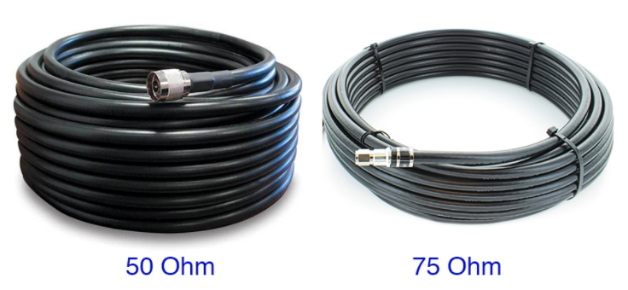Low Impedance Coaxial Cable: Comparison Guide
As you probably remember from your school physics class, Ohms measure the impedance within the cable. Impedance is resistance to the flow of electrical current through a circuit.

A smaller Ohm measurement equals less impedance. This means that a 50 Ohm cable has less resistance to the electrical current than a 75 Ohm cable. Though there really isn’t a "better" level of impedance, it just depends on what application you want your cable to be used for.
Having said that, 75 Ohm cables are the standard coaxial cables used throughout most domestic situations and are usually pre-wired into many homes and small businesses. The most common application for 75 Ohm cables is transmitting video and audio signals, where you connect televisions to cable and satellite receivers and internet routers. These cables are perfectly designed for smaller applications where a signal is transmitted no more than 50 feet before the signal is repeated by an active device.
50 Ohm coaxial cables, on the other hand, are usually put to work in wired and wireless networks to relay data signals. Low-loss 50 Ohm cables are the ideal choice for transferring RF signals in wireless networks. So for commercial installations, 50 Ohm cables often have the advantage over 75 Ohm because they perform better by providing less attenuation than 75 Ohm cables for distances of more than 100 feet and over larger networks. One thing to bear in mind is that 50 Ohm cables are much bulkier than 75 ohm and use significantly larger connectors. Typical applications for 50 Ohm cables include GPS, cellular and test and measurement applications.
So for the lowest impedance of electrical current, 50 Ohm is the better option. 75 Ohm cables lose almost two times the amount of dB gain every 10 feet when compared to 50 Ohm cables. It's also good to remember that 50 Ohm and 75 Ohm ratings only refer to the cables themselves, not the connectors. Cables and connectors can be mixed and matched with other systems.
For more information to help you choose which low impedance coaxial cable to use, this Guide to Coaxial Cable RG Styles and Specifications, will provide you with more data on cable impedance and product trade-offs within different applications for various coax cable types.
